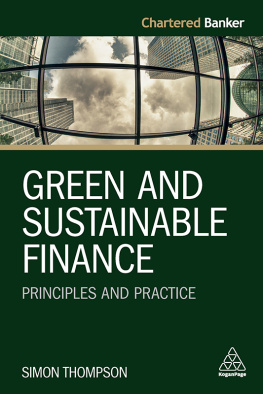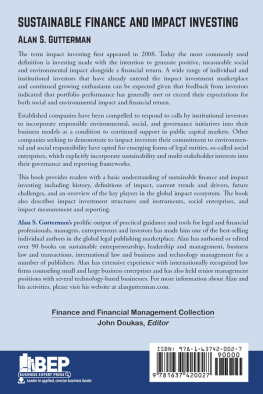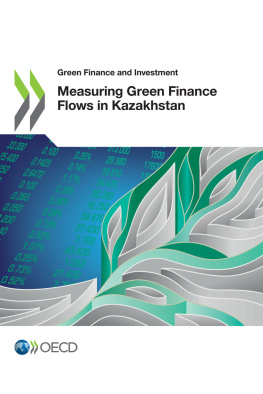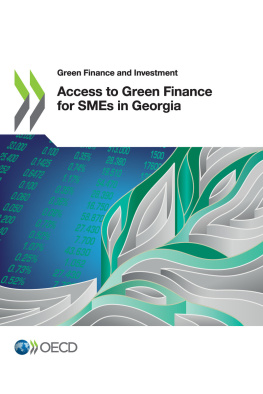Thompson Simon - Green and Sustainable Finance
Here you can read online Thompson Simon - Green and Sustainable Finance full text of the book (entire story) in english for free. Download pdf and epub, get meaning, cover and reviews about this ebook. year: 2021, publisher: Kogan Page, Limited, genre: Romance novel. Description of the work, (preface) as well as reviews are available. Best literature library LitArk.com created for fans of good reading and offers a wide selection of genres:
Romance novel
Science fiction
Adventure
Detective
Science
History
Home and family
Prose
Art
Politics
Computer
Non-fiction
Religion
Business
Children
Humor
Choose a favorite category and find really read worthwhile books. Enjoy immersion in the world of imagination, feel the emotions of the characters or learn something new for yourself, make an fascinating discovery.
- Book:Green and Sustainable Finance
- Author:
- Publisher:Kogan Page, Limited
- Genre:
- Year:2021
- Rating:4 / 5
- Favourites:Add to favourites
- Your mark:
- 80
- 1
- 2
- 3
- 4
- 5
Green and Sustainable Finance: summary, description and annotation
We offer to read an annotation, description, summary or preface (depends on what the author of the book "Green and Sustainable Finance" wrote himself). If you haven't found the necessary information about the book — write in the comments, we will try to find it.
Green and Sustainable Finance — read online for free the complete book (whole text) full work
Below is the text of the book, divided by pages. System saving the place of the last page read, allows you to conveniently read the book "Green and Sustainable Finance" online for free, without having to search again every time where you left off. Put a bookmark, and you can go to the page where you finished reading at any time.
Font size:
Interval:
Bookmark:
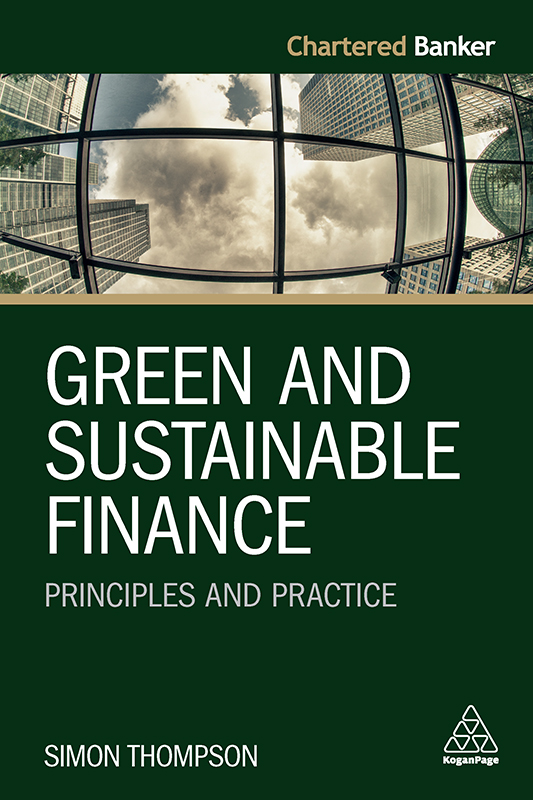
In 2017, I challenged Simon Thompson and the Chartered Banker Institute to create training programmes that would set the global benchmark for the knowledge and skills required by finance professionals leading the transition to net zero, emphasizing the science content needed to understand fully the relationship between finance and climate-related risk. This he has done emphatically in what I believe is a world first in green finance education. I am very proud to see these published, and recommend them to colleagues worldwide who wish to develop and demonstrate their knowledge of the science behind, and the principles and practice of, green and sustainable finance.
Sir Roger Gifford, Chair, Green Finance Institute
Finance professionals reading this book will not only have the knowledge about green finance they need, but the understanding to put that knowledge to practical use. An essential read as the financial and corporate world finally put climate considerations front and centre.
Dame Susan Rice DBE
An excellent and very timely introduction to the important subject of green and sustainable finance and how financial institutions can truly become fit for purpose for financing the needs of society. We need every finance professional to develop their knowledge of the topics covered in this book, and apply them in their work, if we are to successfully transform finance and our economies to support a sustainable, low-carbon future.
Eric Usher, Head, UNEP Finance Initiative
This progressive book provides a comprehensive review and explanation of the origin, content and rationale of the form, scale and scope of green finance and its implications internationally. By weaving together the theory, history, practice, significance and ramifications of green finance, this contribution provides a solid foundation and introduction to this most important topic.
John K Ashton, Professor of Banking, Bangor University Business School
Incredibly comprehensive and yet very easy to read and navigate. The financial services sector will have to transform rapidly to respond to the climate crisis. Building the right skills and knowledge on this topic will be key to succeed so this is a recommended read, not just for sustainability practitioners but all bankers.
Elisa Moscolin, Head of Sustainability and ESG, Santander UK
Over the next three decades, $3.5 trillion needs to be invested annually in infrastructure to meet the climate challenge. Mark Carney, former Governor of the Bank of England, has said the scale of that funding requirement means we need to turn billions of public capital into trillions of private capital. That calls for exceptional standards of professionalism from financiers and others, and Simon Thompsons book is an exemplary toolkit for board members and beginners alike in this, the greatest crisis and the greatest opportunity of our times.
Simon Culhane, Chartered FCSI, CEO, Chartered Institute for Securities & Investment
Culture, Conduct and Ethics in Banking Fred Bell
Retail and Digital Banking John Henderson
Commercial Lending Adrian Cudby
Relationship Management in Banking Steve Goulding and Richard Abley
The above titles are available from all good bookshops.
For further information on these and other Kogan Page titles, or to order online, visit the Kogan Page website at: www.koganpage.com .
In the aftermath of the 2008 Global Financial Crisis, many including many financial services professionals felt the finance sector needed to fundamentally reconsider its strategies, operations and activities, and align these with more socially-purposeful, longer-term aims and objectives to deliver greater shared economic and social value. Finance, in short, should become more sustainable.
Following the 2015 Paris Agreement on climate change, policymakers, regulators and practitioners have focused on environmental sustainability, especially tackling global warming. Article 2.1c of the Paris Agreement requires signatories to align flows of finance with lower greenhouse gas emissions and climate resilient development. It is extremely significant that the key global climate change agreement singles out the critical role of finance.
By December 2020, 125 countries had published net zero or similar targets by 2050 at the latest, requiring systemic economic transitions on an unprecedented scale. Every economic entity will need to align their own strategies, operations and activities with below 2oC of global warming, and the finance sector banks, fund managers, insurers, investors and a wide range of supporting professional services must play a leading role. Green finance will power the transition, ensuring capital flows to the firms, investments, projects and technologies creating our sustainable, low-carbon world.
Mark Carney, the UN Special Envoy for Climate Action and Finance, tells us that the objective for the finance sector is simple: every professional financial decision must take climate change into account. This requires not only institutions, but also individuals to align their professional activities and behaviour with this goal. Financial decisions are not taken by institutions, but by individuals and it is individual finance professionals, not just sustainability professionals, who must embed green and sustainable finance principles and practice into their advice, analysis, actions and decisions if we are to lead a successful transition.
There is a wider perspective to sustainable finance beyond climate change, and indeed we cannot successfully address the climate emergency without addressing broader aspects of economic and social sustainability, as well as creating a more widely shared prosperity for current and future generations. Aligning the finance sector to support a wider set of societal goals, as expressed in the 17 United Nations Sustainable Development Goals, is equally important.
Recognizing the need to develop finance professionals knowledge and skills of green and sustainable finance, the Chartered Banker Institute the oldest institute of bankers in the world launched the worlds first benchmark Certificate in Green and Sustainable Finance in 2018. This book is based on an updated version of that programme. Our aim is to ensure that sustainability and stewardship sit alongside credit, risk, operations, technology and ethics as key aspects of financial professionalism for all working in the finance sector, so that every professional financial decision takes sustainability into account.
I am firmly convinced that embedding green and sustainable finance principles and practice offers wonderful opportunities for finance professionals, and the finance sector. For professionals it offers the opportunity to align work and careers with personal values and play an important societal role. For the finance sector, it provides not just significant commercial opportunities to finance the transition to a sustainable, low carbon world; it gives us the opportunity to demonstrate the very positive social purpose of finance and continue to rebuild trust in our finance profession.
I am extremely grateful to Jason Lowe, Dan Williams, Ailsa Barrow and Katrina MacNeill from the UK Met Office for providing the authoritative view of climate science that underpins much of this book. In addition, I would like to thank Dr Ben Caldecott from the Smith School of Enterprise and the Environment at the University of Oxford for his many contributions, expert advice and comments throughout; our colleagues from the Finance Innovation Lab (Gemma Bone, Anna Laycock, Laurie MacFarlane and Robert Nash) for their significant contributions to the original version of the book, many of which are still included; Olga Shchehrykovich for her comments on risk; Andrew Voysey for guidance on the development of the original Green and Sustainable Finance syllabus; and my colleagues at the Chartered Banker Institute, Lynn McLeod, Madhura Pradhan, David Kennedy and Mark Roberts, for their help developing the Green Finance Certificate for which this book was originally developed.
Next pageFont size:
Interval:
Bookmark:
Similar books «Green and Sustainable Finance»
Look at similar books to Green and Sustainable Finance. We have selected literature similar in name and meaning in the hope of providing readers with more options to find new, interesting, not yet read works.
Discussion, reviews of the book Green and Sustainable Finance and just readers' own opinions. Leave your comments, write what you think about the work, its meaning or the main characters. Specify what exactly you liked and what you didn't like, and why you think so.

